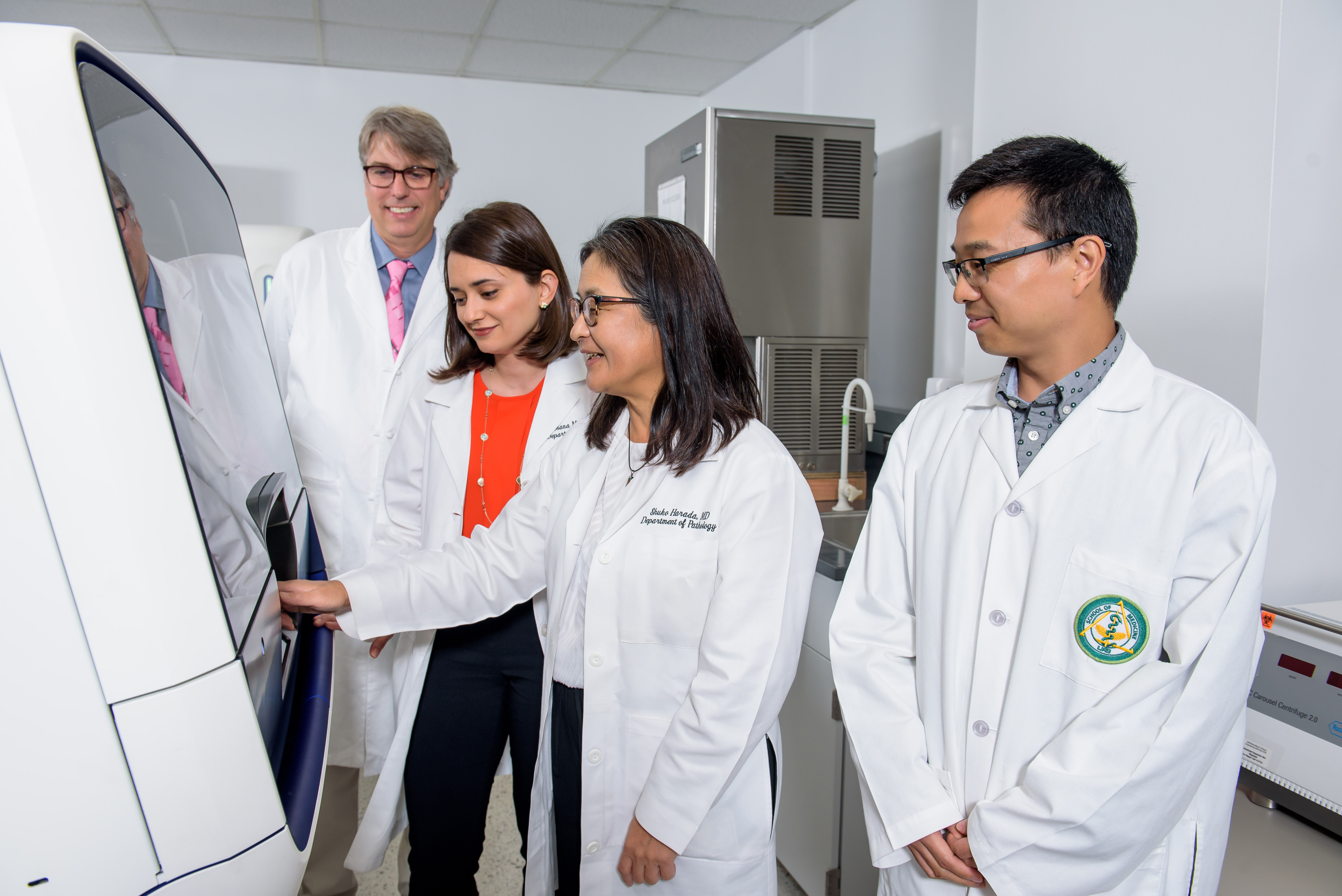Written by Christina Crowe

UAB Pathology and the Division of Genomic Diagnostics and Bioinformatics are pleased to announce a new, state-of-the-art Next Generation Sequencing (NGS) Cancer Assay, now available in the UAB Clinical Molecular Diagnostics Laboratory.
The Oncomine Precision Assay (OPA) uses a streamlined workflow to analyze both DNA and RNA extracted from formalin fixed, paraffin embedded (FFPE) solid tumor tissues. Important features of OPA are the ability to test small tissue samples (e.g., biopsies), and very fast turnaround time (e.g. 3-5 days upon receipt in the molecular lab). OPA detects single nucleotide variants (SNVs), insertions and deletions (INDELs), copy number variations (CNVs), and gene fusions in actionable, cancer-related genes.
“UAB was one of the first academic medical centers to gain access to this instrument—the Ion Torrent Genexus—and implement it,” says Alexander “Craig” Mackinnon, Jr., M.D., Ph.D., Division Director. “It represents the latest technology for in-house, next generation sequencing using amplicon-based targeted sequencing.”
“The major advantages of this test are fast turnaround time and low cost. It works very well with very small DNA input, which means we can test small biopsies that previously would’ve been rejected for this type of test. It is also more or less a semi-automated process, which makes it cheaper due to lower reagent and operating costs.”
Unlike the previous assay UAB employed, HaloPlex, the OPA tests DNA for mutations and RNA for gene fusion events. Mackinnon explains, “Sometimes in solid tumors, two genes get broken in half and then get fused together—almost like a ‘Frankenstein’ protein that damages the cell. Where we used to have to do two tests, now we can do one.”
Importantly, Mackinnon says, all genetic targets listed will be analyzed, regardless of which disease panel is ordered. The team will add additional disease panels, such as liquid tumors, in the near future.
To facilitate billing and reimbursement, OPA will be ordered as a disease-specific panel, for example: Lung Cancer Panel, Melanoma Panel, Gastrointestinal Panel, Brain Tumor Panel, and Solid Tumor Comprehensive Panel. To order the test, clinicians can complete the Molecular Requisition form (available on the LabSource website) and submit FFPE blocks for analysis. The goal for turnaround time is within 3-5 days upon receipt; however, delays up to 2 weeks may occasionally occur due to unforeseen circumstances.
Direct questions to: Dr. Shuko Harada, Section Head of the Molecular Diagnostics Laboratory (205-934-2219), or Gina DeFrank, Molecular Diagnostics Laboratory Director (205-934-6523).